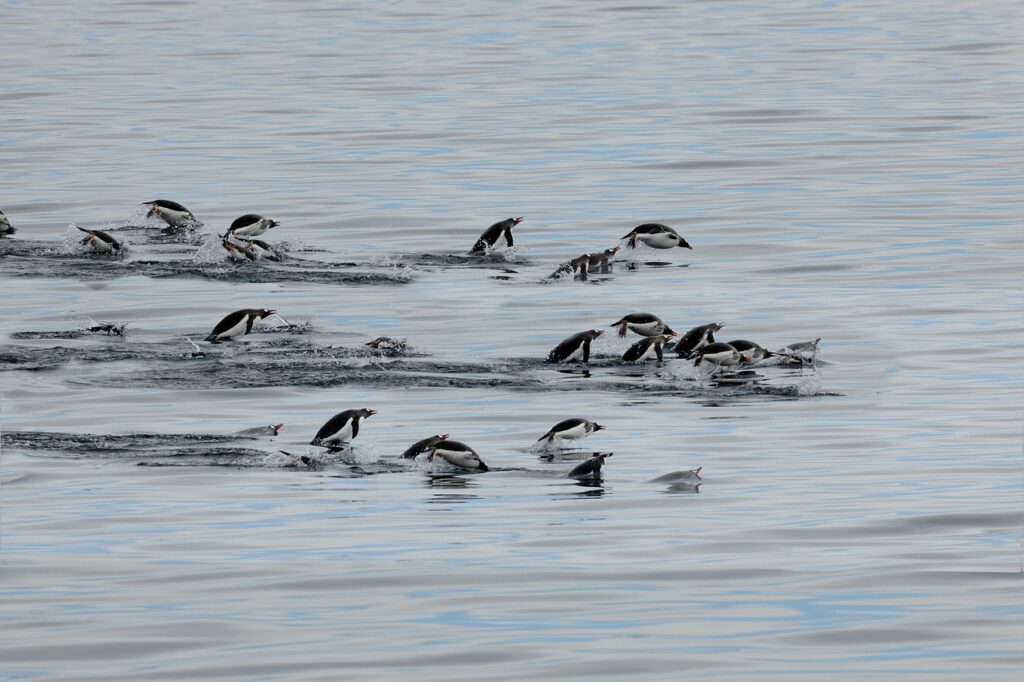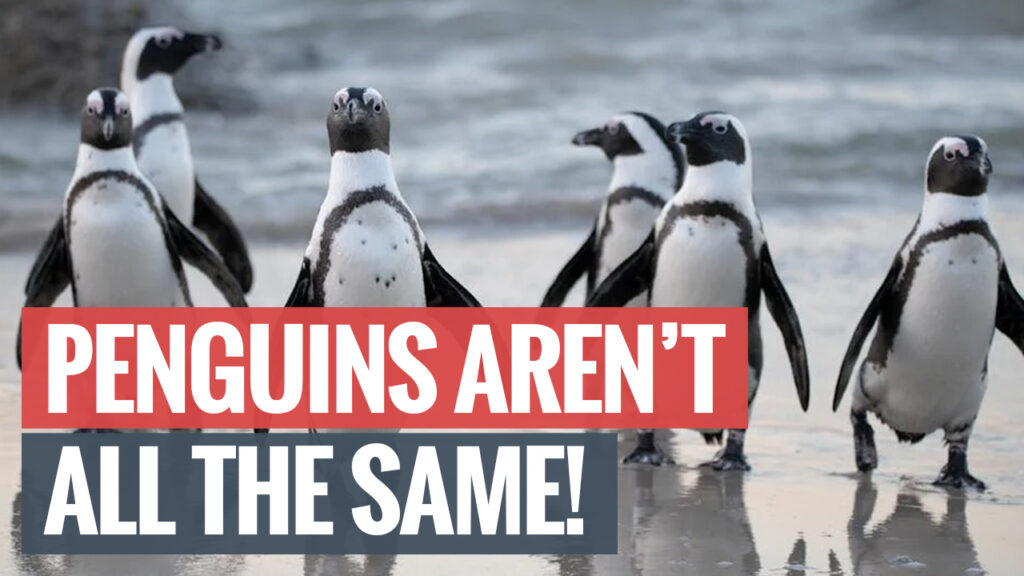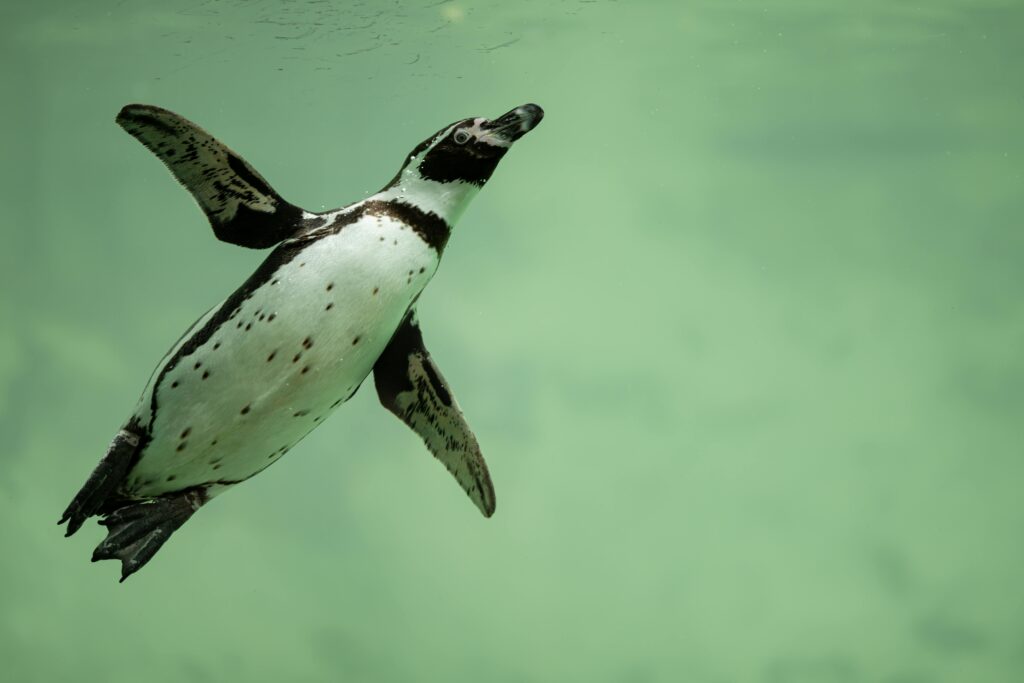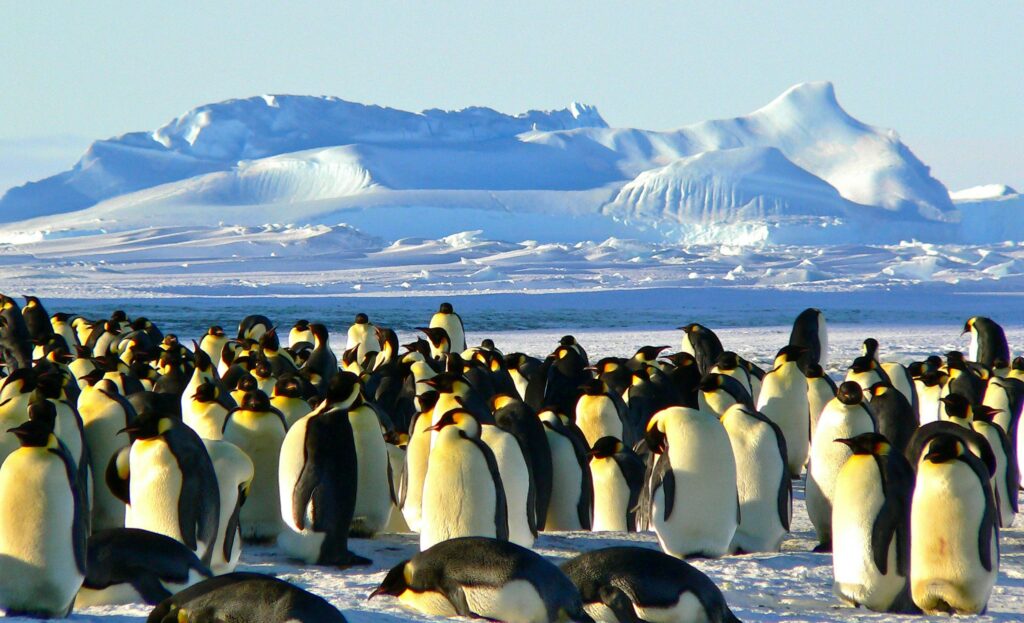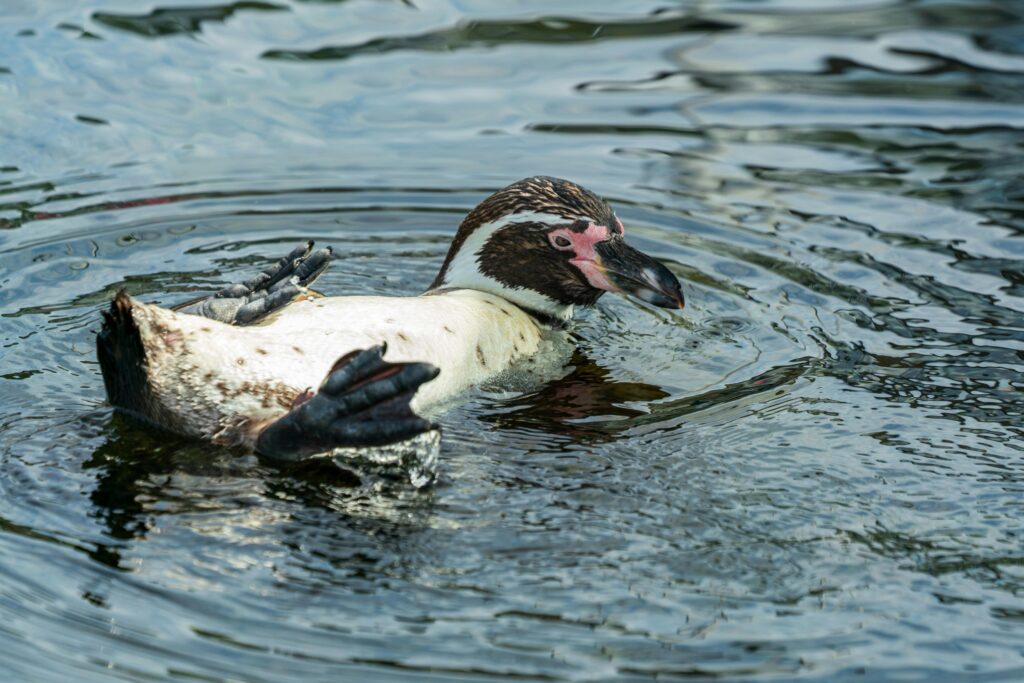The Great Penguin Odyssey
Imagine swimming over 8,000 kilometers through the vast Southern Ocean, diving to depths of 500 meters, and navigating by stars you can barely see through churning waves. For penguins, this isn’t an adventure story—it’s everyday life. These remarkable flightless birds undertake some of the most extraordinary journeys in the animal kingdom, traveling distances that would challenge even the most seasoned human explorers.
But why do penguins embark on these epic migrations? What drives a creature that can’t fly to traverse entire ocean basins? Recent groundbreaking research using GPS tracking and satellite technology has revealed the fascinating answers, showing us that penguin migration is far more complex and crucial than we ever imagined.
The Science Behind Penguin Migration
Survival Through Movement
Unlike many migratory animals that move seasonally between breeding and feeding grounds, penguins have developed a more complex relationship with migration. Their journeys are driven by three primary factors: food availability, breeding requirements, and environmental conditions.
Dr. Sarah Johnson from the British Antarctic Survey, whose 2025 research tracked over 200 emperor penguins, explains: “Penguins don’t migrate just because they can—they migrate because they must. Their survival depends on finding the richest feeding grounds, which can be thousands of kilometers from their breeding colonies.”
The Energy Economics of Long-Distance Travel
Recent studies published in the Marine Ecology Progress Series (2025) have revealed the remarkable energy efficiency of penguin migration. Despite their seemingly awkward appearance on land, penguins are incredibly efficient swimmers. Their torpedo-shaped bodies and powerful flippers allow them to travel at speeds of up to 8 kilometers per hour while using minimal energy.
Emperor penguins, the marathon swimmers of the penguin world, can travel up to 8,000 kilometers during their annual migration cycle. This journey takes them from their Antarctic breeding colonies to the nutrient-rich waters of the Southern Ocean, where they spend months feeding on krill, fish, and squid.
Species-Specific Migration Patterns
Emperor Penguins: The Ultimate Long-Distance Travelers
Emperor penguins hold the record for the longest penguin migrations. GPS tracking data from 2024-2025 shows that some individuals travel over 8,000 kilometers annually, spending up to 8 months at sea. Their migration pattern is closely tied to sea ice formation and the availability of their primary food source—Antarctic krill.
However, recent research has revealed alarming changes in their migration patterns. A 2025 study by the Woods Hole Oceanographic Institution found that emperor penguin populations have declined by 22% since 2009, largely due to changing sea ice conditions that disrupt their traditional migration routes.
Adélie Penguins: The Seasonal Commuters
Adélie penguins follow a more predictable seasonal migration pattern, traveling between 3,000-5,000 kilometers annually. They spend the Antarctic winter at sea, following the edge of the pack ice as it advances northward. Come spring, they return to their rocky breeding colonies along the Antarctic coast.
Dr. Maria Rodriguez, a marine biologist at the University of Chile, notes: “Adélie penguins are like clockwork. Their migration timing is so precise that we can predict their arrival at breeding colonies within days. This precision has evolved over millions of years and is crucial for their reproductive success.”
Fiordland Penguins: The Forest-to-Sea Migrants
One of the most unique migration patterns belongs to the Fiordland penguin of New Zealand. These penguins nest in temperate rainforests but must travel to the open ocean to feed. Their migration involves a dramatic transition from forest floor to open sea—a journey that can cover 2,000 kilometers.
Recent research using miniaturized GPS loggers has shown that Fiordland penguins dive to depths of up to 100 meters during their oceanic phase, targeting lanternfish and squid in the deep scattering layer.
The Navigation Mystery: How Do Penguins Find Their Way?
Built-in GPS Systems
One of the most fascinating aspects of penguin migration is their incredible navigation ability. How do these birds find their way across thousands of kilometers of seemingly featureless ocean?
Recent research published in Current Biology (2024) suggests that penguins use a combination of navigation methods:
- Magnetic Field Detection: Penguins can sense Earth’s magnetic field, using it as a natural compass
- Star Navigation: Like ancient mariners, penguins can navigate using celestial cues
- Ocean Current Recognition: They follow specific current patterns that lead to productive feeding areas
- Landmark Memory: Penguins can remember underwater topographical features
Dr. James Mitchell from the University of Tasmania explains: “Penguins essentially have a built-in GPS system that’s far more sophisticated than anything humans have created. They can navigate with pinpoint accuracy across vast distances, returning to the exact same breeding sites year after year.”
The Role of Ocean Currents and Food Webs
Following the Feast
Penguin migration patterns are intimately connected to ocean productivity. The Southern Ocean’s complex current system creates upwelling zones where nutrient-rich deep water rises to the surface, supporting massive blooms of phytoplankton. These blooms form the base of the food web that sustains krill populations—the primary food source for many penguin species.
A groundbreaking 2025 study using satellite oceanography and penguin tracking data revealed that penguins can predict where these productive zones will form weeks in advance. They adjust their migration routes accordingly, demonstrating an understanding of ocean dynamics that scientists are only beginning to comprehend.
The Krill Connection
Antarctic krill (Euphausia superba) forms the cornerstone of the Southern Ocean ecosystem. These small, shrimp-like creatures aggregate in massive swarms that can contain millions of individuals. Penguins have evolved to time their migrations to coincide with krill spawning and feeding cycles.
However, climate change is disrupting these ancient patterns. Warming ocean temperatures are shifting krill distributions southward, forcing penguins to travel even greater distances to find adequate food supplies.
Climate Change: Disrupting Ancient Migration Routes
Changing Ice, Changing Lives
The most significant threat to penguin migration patterns is climate change. Sea ice, which serves as both a platform for resting and a nursery for krill, is disappearing at an alarming rate. The Antarctic Peninsula has experienced some of the fastest warming on Earth, with average temperatures rising by 3°C over the past 50 years.
This warming has profound implications for penguin migration:
- Extended Travel Distances: As ice retreats, penguins must swim farther to reach productive feeding areas
- Timing Mismatches: Traditional migration timing may no longer align with peak food availability
- Energy Depletion: Longer journeys require more energy, leaving less for breeding and chick-rearing
Adaptation and Resilience
Despite these challenges, penguins are showing remarkable adaptability. Some populations are adjusting their migration timing, while others are exploring new feeding areas. Gentoo penguins, for example, have expanded their range southward as ice conditions change, demonstrating the flexibility that may be crucial for survival in a changing world.
Technology Revolutionizing Penguin Research
The GPS Revolution
Modern penguin migration research has been revolutionized by miniaturized GPS tracking devices. These tiny loggers, weighing less than 50 grams, can record a penguin’s location, diving depth, and swimming speed with incredible precision.
The latest generation of tracking devices, deployed in 2024-2025 research seasons, can transmit data via satellite in real-time, allowing scientists to follow penguin journeys as they happen. This technology has revealed migration patterns that were previously impossible to study.
Citizen Science and Penguin Watch
The Penguin Watch project, a citizen science initiative, has engaged thousands of volunteers worldwide in analyzing penguin behavior from remote camera footage. This massive collaborative effort has provided insights into penguin migration timing and colony dynamics on an unprecedented scale.
Conservation Implications: Protecting Migration Corridors
Marine Protected Areas
Understanding penguin migration patterns is crucial for effective conservation. Recent research has identified key migration corridors and feeding areas that require protection. The establishment of marine protected areas (MPAs) along these routes could provide safe havens for migrating penguins.
In 2024, the Commission for the Conservation of Antarctic Marine Living Resources (CCAMLR) proposed new MPAs based partly on penguin tracking data, demonstrating how migration research directly informs conservation policy.
Sustainable Fisheries Management
Penguin migration data is also being used to manage fisheries more sustainably. By understanding when and where penguins feed, fishing quotas can be adjusted to ensure adequate food remains for penguin populations.
The Future of Penguin Migration
Predictive Modeling
Scientists are now developing sophisticated computer models that can predict how penguin migration patterns might change under different climate scenarios. These models combine oceanographic data, climate projections, and penguin tracking information to forecast future migration routes.
Dr. Lisa Chen from the Australian Antarctic Division notes: “By understanding how penguins might adapt their migration patterns, we can better prepare conservation strategies for the future. It’s like having a crystal ball for penguin conservation.”
Emerging Threats and Opportunities
As the Southern Ocean continues to change, new challenges and opportunities are emerging for migrating penguins. Some areas previously covered by ice year-round are becoming accessible, potentially opening new feeding grounds. However, increased human activity in these areas, including shipping and tourism, poses new risks.
Conclusion: Guardians of the Southern Ocean
Penguin migration represents one of nature’s most remarkable achievements—a testament to millions of years of evolution and adaptation. These incredible journeys, spanning thousands of kilometers across some of Earth’s most challenging environments, reveal the deep connections between penguins and the ocean systems that sustain them.
As we face an uncertain future marked by rapid climate change, understanding and protecting penguin migration patterns becomes more crucial than ever. These birds serve as sentinels of ocean health, their journeys telling us stories about the state of our planet’s marine ecosystems.
Every penguin that completes its epic migration is a victory for resilience and adaptation. By supporting penguin research and conservation efforts, we’re not just protecting these remarkable birds—we’re safeguarding the intricate web of life that connects the Southern Ocean’s vast blue wilderness.
The next time you see a penguin, remember: you’re looking at one of nature’s greatest travelers, a creature whose ancestors have been navigating the world’s oceans for millions of years. Their journeys continue, carrying with them the hopes and challenges of a changing world.
